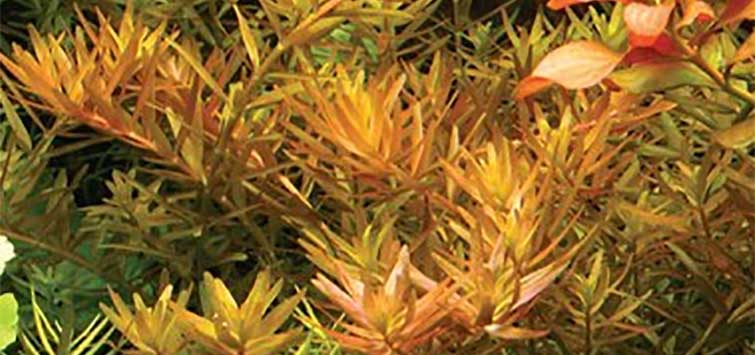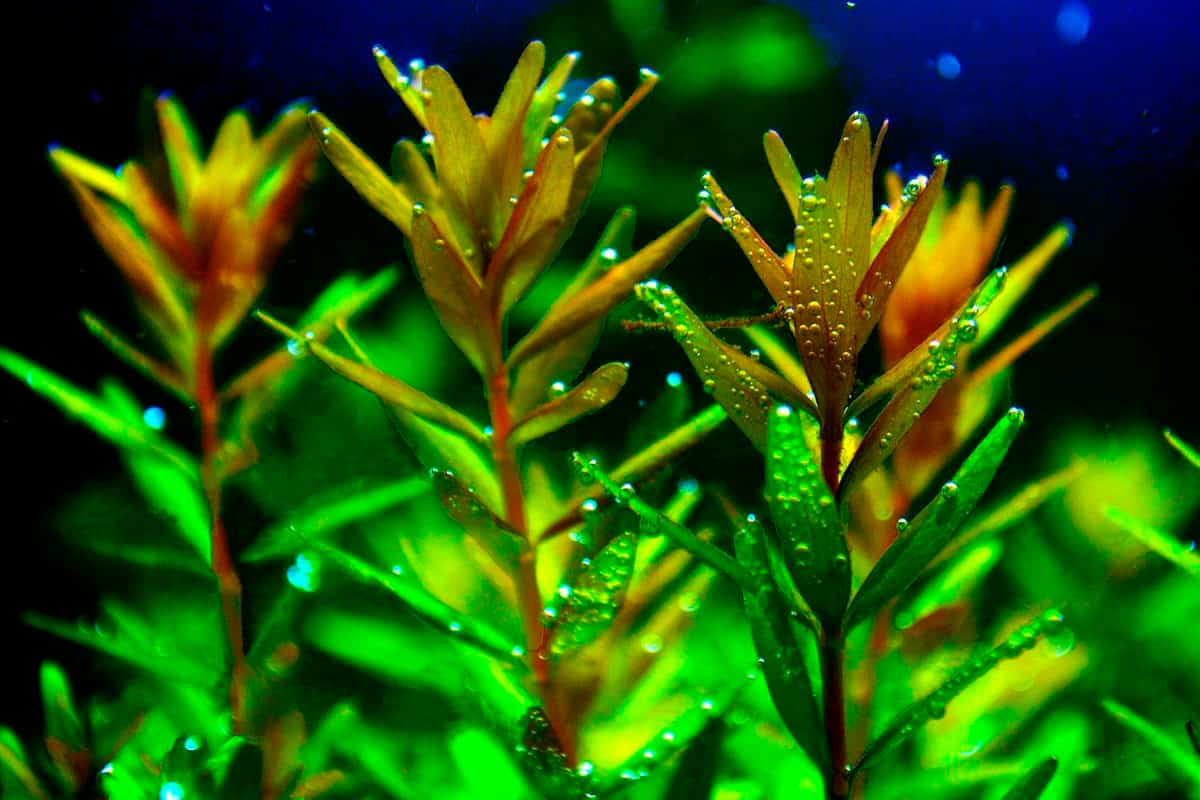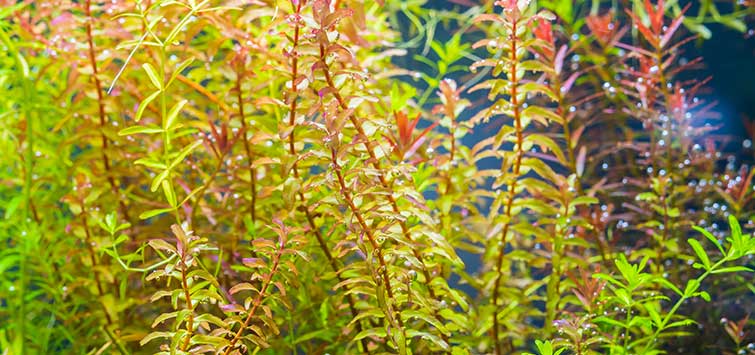As an ardent aquatic life aficionado, you have probably come across an array of varying aquatic flora. One of which you might be curious about is the Dwarf Rotala. “What Is The Aquatic Plant Dwarf Rotala” uncovers the various facets and characteristics of this intriguing water dweller, Rotala Rotundfolia, colloquially named Dwarf Rotala. This comprehensive piece explores the physical attributes, habitats, and growth patterns that define this dynamic aquatic plant, offering a wealth of knowledge to both hobbyist aquascapers and serious water gardening enthusiasts alike.

General Overview of Aquatic Plants
In the vast expanse of the world’s array of flora, a unique group requires special attention: the aquatic plants. These plants spend the entirety or a majority of their lifecycle submerged in water. Their adaptability and diversity push the boundaries of nature’s capabilities and attest to the sheer variety of life present on Earth.
Understanding the role of aquatic plants
Aquatic plants are key players in aquatic ecosystems. Acting as the primary producers, they use sunlight to synthesize nutrients from carbon dioxide and water, furnishing the base for the aquatic food chains. Besides providing food, these plants grant protection and breeding grounds for a plethora of invertebrates, amphibians, and fish.
Vital features of aquatic plants
Aquatic plants exhibit unique characteristics that enable them to survive in water. They have flexible stems which facilitate the flow with water currents, air spaces to ensure buoyancy, and specially adapted roots for anchoring to the substrate. Some aquatic plants exhibit rhizomes and tubers, enabling their survival and growth during unfavorable conditions.
The diversity among aquatic plants
From submerged marsh plants, towering reed species to delightful floating varieties, aquatic plants introduce a fascinating array of forms and sizes, each perfect for different ecological niches. This vast diversity results in ecosystems rich in structure and suitable for a wide spectrum of aquatic fauna.
Identification of Dwarf Rotala
Among the myriad of aquatic plants in the world, the Dwarf Rotala stands out.
Characteristics of dwarf rotala
Dwarf Rotala, or Rotala rotundifolia, stakes its claim in the aquarium world for its pleasing visual aesthetics and easy growability. Its name rotundifolia, literally round-leaved, can be deceiving as in its submerged state, the plant produces narrow, long leaves as opposed to its round terrestrial leaf form.
Scientific classification
Dwarf Rotala belongs to the family Lythraceae, generically named Rotala. The species name is rotundifolia, thus making it Rotala rotundifolia.
Visual traits of dwarf rotala
The plant exhibits a reddish hue under strong light, with its stems growing densely packed to create a beautiful, bushy appearance. Small pink flowers bloom when the plant is allowed to grow out of the water.

Natural Habitat of Dwarf Rotala
Geographic distribution
Dwarf Rotala originally hails from Southeast Asia, specifically thriving in the countries of China, Vietnam, and Burma.
Typical water conditions
In its natural habitat, the Dwarf Rotala flourishes in gently moving waters. This plant is observed growing in a variety of pH levels ranging from 5.0 to 7.0, indicating its hardy nature.
Preferred temperature ranges
Dwarf Rotala favors warm environments, with a temperature range of 20°-30°C (68°-86°F) being optimal for its growth.
Cultivation of Dwarf Rotala
General planting procedures
Due to Dwarf Rotala’s peculiar stem-growing habit, it can be cultivated by sticking stems directly into the substrate. Stems are often sold in bunches rather than as individuals, which quickly lead to a thick, bushy growth.
Caring for newly-planted dwarf rotala
After planting, it’s recommended to lightly trim the stems to encourage lateral growth. Good lighting is essential for their survival, and CO2 supplementation can enhance their growth, though it isn’t strictly necessary.
Optimal growth conditions
As a versatile plant, Dwarf Rotala can withstand a wide range of water conditions. However, to get the best results, water temperature should be between 22°C-28°C, pH levels around 6.0-7.5, and moderate to high lighting conditions should be provided.

Propagation of Dwarf Rotala
Asexual reproduction methods
Propagation of Dwarf Rotala is simply achieved by cutting the top part of the stem and re-planting it in the substrate, making it an ideal plant for beginner aquascapers.
Sexual reproduction methods
While sexual reproduction is observed in Dwarf Rotala’s natural habitat, involving flowering and seed formation, it’s a rare occurrence in contained environments like home aquariums.
Monitoring the growth of the propagated plant
After planting the substrate, it’s important to monitor the new growth emerging from the stem cuttings. Proper nutrition and lighting can ensure healthy and vibrant growth.
Common Pests and Diseases of Dwarf Rotala
Identifying common pests
Like any other aquatic plants, Dwarf Rotala may be prone to pests, such as snails, algae, or shrimp, nibbling on its leaves. The damage is usually minimal and can be mitigated by balanced feeding of the aquarium inhabitants.
Dealing with plant diseases
Stunted growth, leaf discoloration, or melting are some of the signs of a diseased Dwarf Rotala. Causes could be poor water conditions, inadequate lighting or lack of essential nutrients. It’s crucial to diagnose these issues early and treat them accordingly.
Possible solutions and treatments
Solutions could range from adjusting light parameters, supplementing necessary nutrients to changing water regularly to maintain its quality. In extreme cases, a complete removal and quarantine of the affected plant may be necessary.

Dwarf Rotala in Aquascaping
Dwarf Rotala holds a prominent place in the field of aquascaping – the crafting of underwater landscapes.
Role of dwarf rotala in aquascaping
It’s often used as a background or mid-ground element, adding depth and dynamism to an aquarium. The ‘Dutch Style’ aquarium, characterized by its lush, plant-focused aesthetic, frequently features the Dwarf Rotala.
Benefits of dwarf rotala in an aquarium
Besides aesthetic appeal, Dwarf Rotala contributes to the aquarium’s health. It releases oxygen during photosynthesis, aiding the breathing of the aquarium inhabitants. It also helps in water filtration by absorbing excess nutrients, thus preventing algae growth.
Creating aesthetically pleasing arrangements
With their dense, colorful growth, they can couple with other plant species to create visually attractive layers in an aquarium. Grouping the stems in a triangular or concave arrangement can create a natural and pleasing visual effect.
Importance of Dwarf Rotala for Aquatic Life
Benefits for fish and other aquatic animals
Dwarf Rotala offers a haven for a variety of fish and invertebrates, where they can hide, feed and breed. For timid or small species, these plants provide the perfect shelter.
Creating a balanced ecosystem
As producers, Dwarf Rotala is a crucial component of the underwater food chain, contributing to a healthy and functioning ecosystem within the aquarium. By absorbing excessive nutrients, they help maintain a stable water chemistry and prevent the dominance of harmful algae.
Impact on water chemistry
Dwarf Rotala can play a critical role in the maintenance of your aquarium’s water chemistry. They aid in nutrient cycling and have a stabilizing effect on water parameters like pH and hardness.

Conservation Status of Dwarf Rotala
Current conservation status
Dwarf Rotala enjoys a wide geographical range and is not presently considered to be at risk. However, changes in local environments could pose threats to these species.
Threats to the species
Like many other aquatic species, pollution, habitat destruction and over-collection for trade could affect the persistence of Dwarf Rotala in the wild.
Conservation efforts
Monitoring of wild populations and habitat preservation measures can prove fruitful in ensuring the continued survival of Dwarf Rotala.
Advantages of Having Dwarf Rotala in Home Aquariums
Improvement of water quality
By absorbing excess nutrients and emitting oxygen, Dwarf Rotala plays a crucial role in maintaining and improving water quality in aquariums.
Provides shelter and food for aquarium occupants
Whether it’s tiny invertebrates, juvenile fish or egg-layer species, Dwarf Rotala offers an excellent refuge and feeding ground.
Aesthetic appeal of dwarf rotala
Apart from their ecological benefits, Dwarf Rotala’s aesthetic appeal is a major draw for aquarists. Their bushy growth and pleasing colors can liven up any aquarium, making them an excellent choice for home aquariums and aquascaping art.
